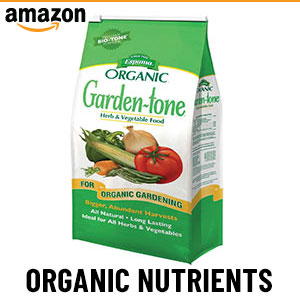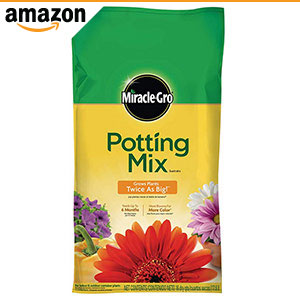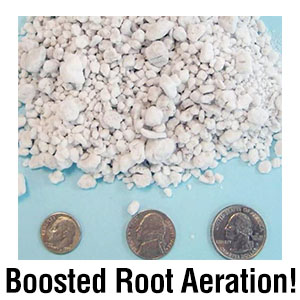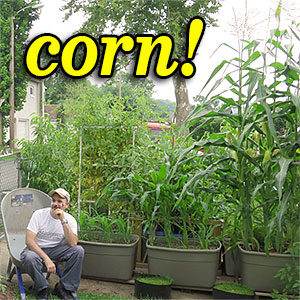Gardening & Growing Perennial Plants in Air Pruning Pots: Tutorial, Tips & FAQs
These special air pruning pots have super-charged my plants! They're a great way to encourage healthy vigorous root growth, especially with fruit trees. Even garden vegetables can benefit from root air pruning!
- Air Pruning Pots 101: Basic FAQs
- What Is Air Pruning?
- Does Air Pruning Really Improve Container Gardening?
- Why Do Air Pruning Pots Grow Plants Faster?
- Should Every Gardener Use Air Pruning Pots?
- The Best Pots to Use for Bare Root Trees:
- Air Pruning Pots vs Self-Watering, Wicking Containers

At the end of the season this pepper plant had developed thick, circled roots caused by its original seedling container.
Setting Up Air Pruning Pots:
Tips & Tutorial!
Growing in air pruning containers: See my tips for success!
What Is Air Pruning?
HOW IT WORKS: Root air pruning is a simple concept. When the tips of the plant roots come in contact with dry air, they are killed off. This forces the plant to generate new root growth, resulting in a dense, fibrous root system. This prevents root circling. If left unchecked, root circling eventually leads to girdled roots which can choke out large woody plants, like trees.
Does Air Pruning Really Improve Container Gardening?
Yes! Air-Pot containers have revolutionized the garden & horticulture industry. Many nurseries have found that perennial plants grown in Air-Pots suffer from less transplant shock. They also have much better odds of survival. Home gardeners have seen similar improvements with some of their vegetable crops. Small air pruning containers can be selected for vigorous pepper or tomato seedlings. Once planted outdoors you can expect a more healthier root system as the plants develop.

Although the RediRoot pot isn't perfect, it helped quite a bit to reduce the root circling of this pepper plant.
Why Do Air Pruning Pots Grow Plants Faster?
Air pruning pots can supply oxygen to plant roots, helping them to remain healthy. However, a big reason that these pots are so effective is because they cause plant to develop more natural and efficient root systems. Plants can remain in an Air-Pot for a longer time, without becoming badly root bound. As long as you keep them watered, the plants will keep growing larger & stronger.
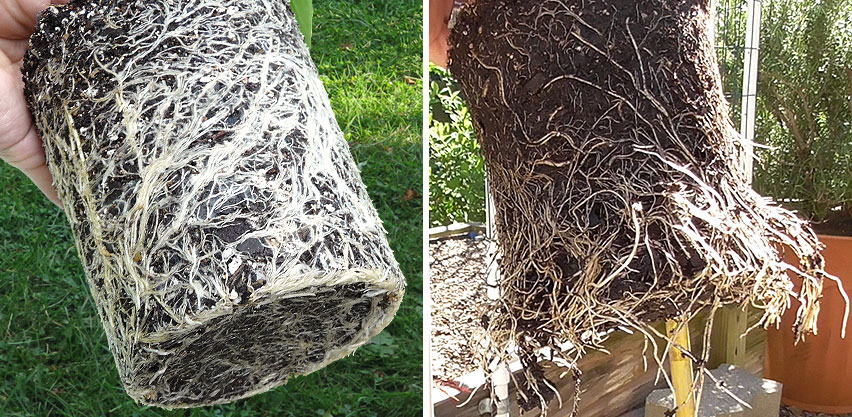
Before transplanting, you can try to loosen up all of those tangled roots, but this may cause transplant shock.
Should Every Gardener Use Air Pruning Pots?
I've seen some really creative marketing that Superoots has used to push their Air-Pots into the gardening consumer market. To be honest, I think some of it is a gimmick. Sometimes these things are over-hyped. You can find promo photos showing things like onions or carrots growing in Air-Pots. I think that's a joke! You shouldn't expect to get the same benefit for all of your annual vegetables as you would woody perennials.

This woody perennial was not growing well. After ripping it out I could see how the nursery pot caused mangled roots.
The Best Pots to Use for Bare Root Trees:
If you're potting up a bare root tree, I suggest starting with a 10 or 12 gallon air pruning container. To avoid unhealthy root circling, plant the tree directly into the air pruning pot. After the 1st growing season, you might consider increasing the pot size to 20 to 30 gallons. This will allow you grow a fairly large, vigorous, semi-dwarf fruit tree.
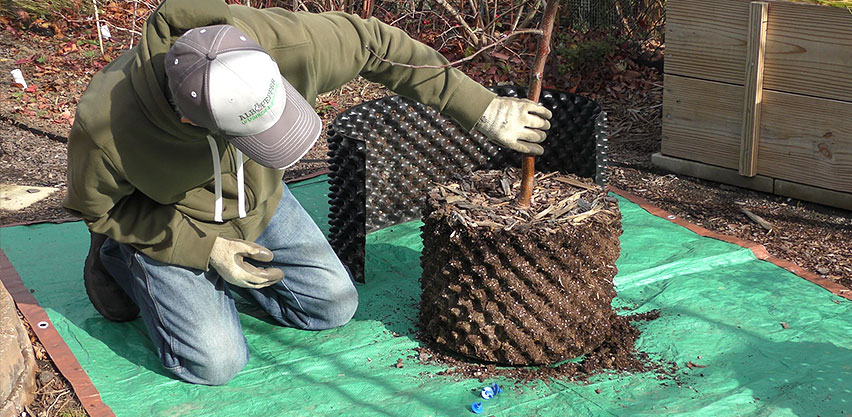
This apple tree was given a very strong start by being grown in a 10 gallon air pruning pot.
Air Pruning Pots vs Self-Watering, Wicking Containers
A major drawback of air pruning pots is that they dry out faster. On the other hand, sub-irrigated containers & beds (SIPs) are extremely effective at keeping garden plant watered. Some growers will use DIY hybrid systems. These are air pruned on the sidewalls. But then the bottom of the containers rest about a wicking reservoir. I personally don't take this approach. My solution is to simply build full size wicking beds. These aren't nearly as restrictive to plant roots & they are very easy to keep watered!
← READ MORE: Traditional Pots & Containers
What About Hydroponics? →

![GARDENERS: Who else would pay money for poop? [Gardening T-Shirt Design]](images/GARDENERS--Who-else-would-pay-money-for-poop_Gardening-Tshirt-th.jpg)
